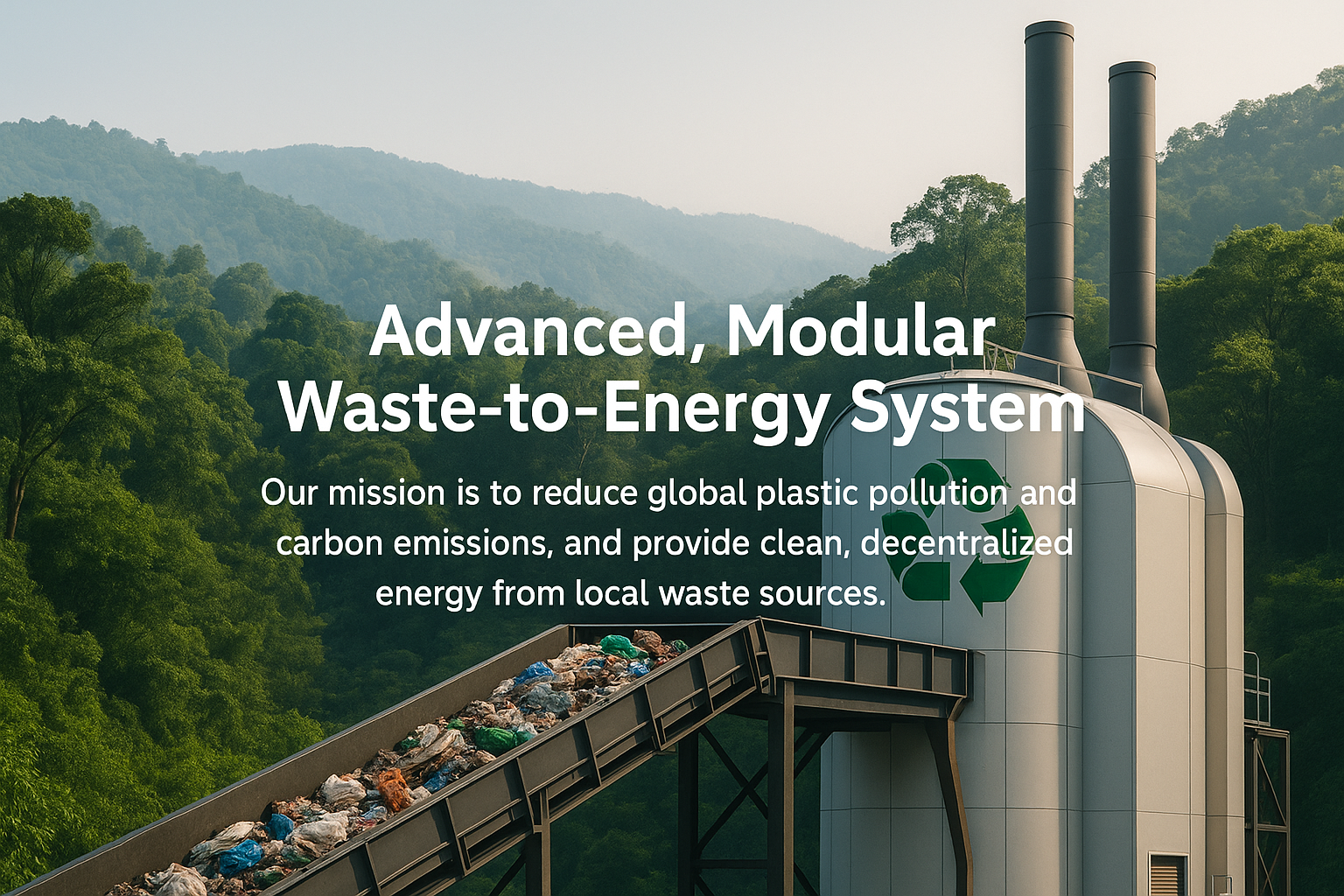Clean Energy from Plastic Waste
ThermoDeg converts hazardous and plastic waste into electricity and thermal energy, helping fight climate change and waste pollution.
The ThermoDeg Reactor
ThermoDeg’s proprietary reactor is a cutting-edge modular technology that transforms plastic and organic waste into high-value energy resources. Our mission is to tackle global plastic pollution and carbon emissions by enabling clean, decentralized energy systems powered by local waste


Mission
The ThermoDeg reactor is an advanced, modular waste-to-energy system converting plastic and organic waste into valuable energy. Our mission is to reduce global plastic pollution and carbon emissions while enabling clean, decentralized energy generation from local waste streams.
Technology
ThermoDeg’s proprietary thermal reactor breaks down hydrocarbons at high temperatures without combustion or oxygen. The process generates clean, high-energy synthesis gas or liquid fuel, which can be used for heat or electricity production. Designed as a closed-loop and emissions-free system, ThermoDeg technology can be tailored to match local energy and waste conditions.


How It Works
Inside the ThermoDeg reactor, waste is broken down at 400–480°C through steam-assisted pyrolysis in a sealed, oxygen-free environment. Part of the resulting synthesis gas is reused to power the system itself, while the remaining energy is harnessed as electricity or thermal output.
Applications
ThermoDeg can serve communities, factories, and islands through local, independent energy systems. It's also suitable for tackling marine waste and landfill reduction, offering a sustainable, scalable waste-to-energy solution.

Why ThermoDeg?
A single ThermoDeg reactor can supply an entire community’s annual energy demand while significantly reducing plastic waste. With zero emissions, low operating costs, and a fast return on investment, it’s the ideal solution for decentralized, flexible, and sustainable clean energy — where efficiency and environmental impact truly matter.
Key Advantages
- Up to 8,000 operating hours annually
- Processes up to 2,500 tons of waste per year, per reactor
- Handles contaminated and hazardous waste
- No combustion, zero harmful emissions
- Fully automated with remote control
- Energy self-sufficient and low operating cost
- Fast return on investment (3–4 years)
- Customizable for various waste types (PET, RDF, rubber, etc.)
- Can save the World in 6 years
